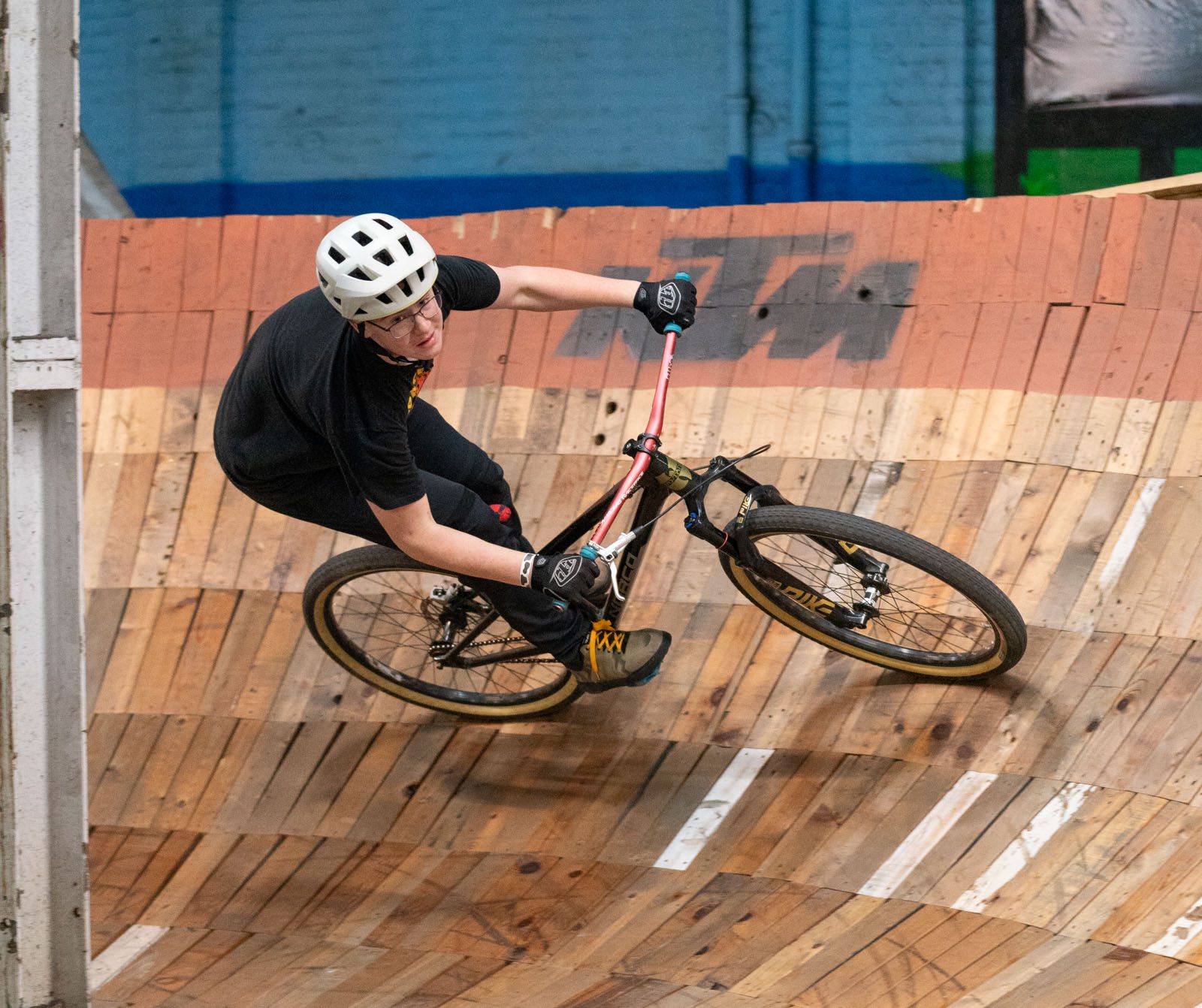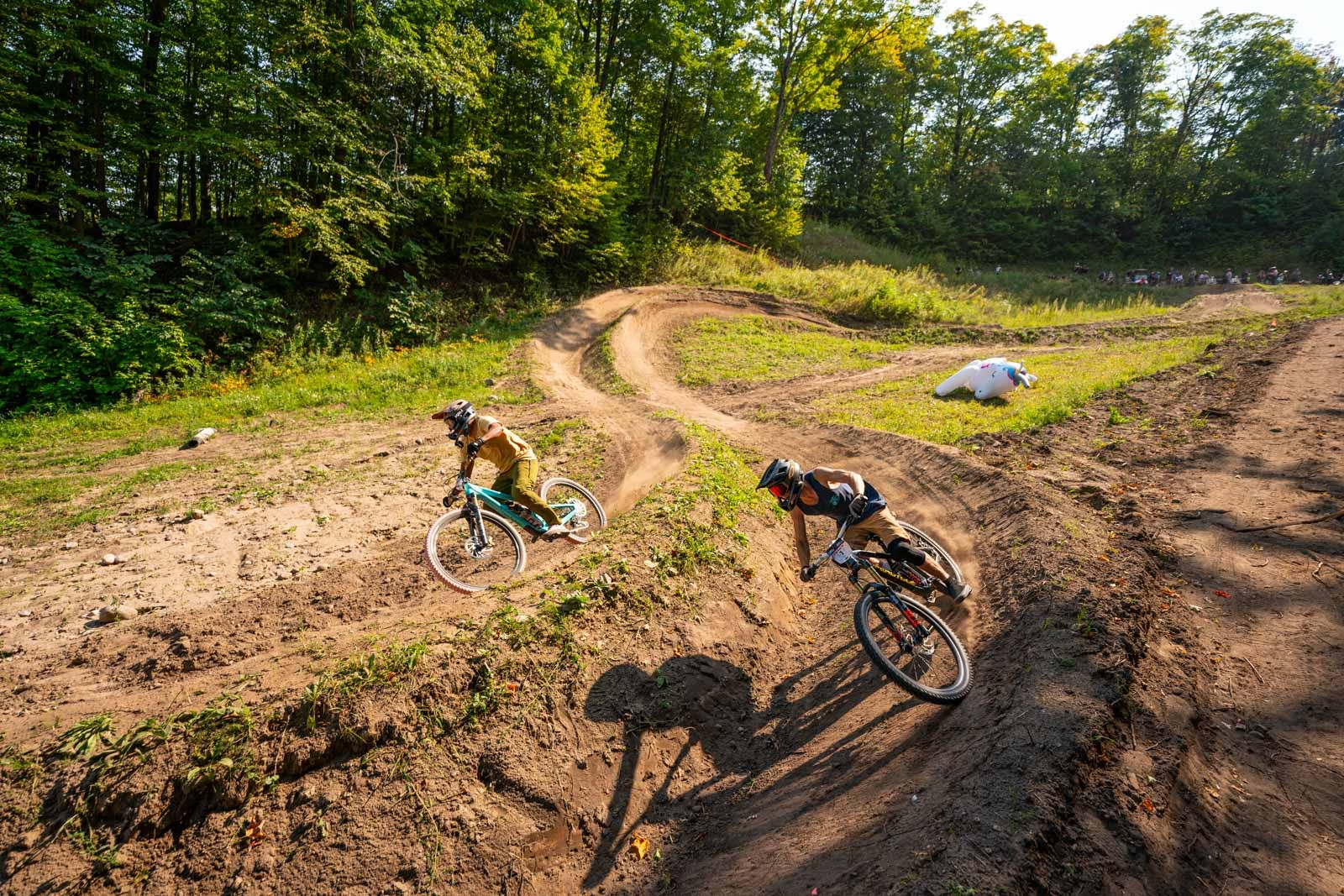Berms are built to help you carry speed smoothly through turns. But like most things on a bike, there’s a right way and a wrong way to ride them. Done well, you’ll exit faster than you entered. Done poorly, you’ll be fighting for grip and speed. Here’s how to ride berms properly, so you can rail them with confidence.
Line choice: stay high, stay smooth
It may look like there’s just one line through a berm, but that’s not the case. Avoid coming in too low where loose dirt accumulates. It’s slippery and doesn’t let you use the berm’s support. Instead, aim for a line about three-quarters of the way up the berm, flowing smoothly around the arc. Enter too high and you risk losing support at the exit. Enter too low and you’ll drift high by the time you exit. The best approach is to aim central-to-high on entry and stay committed to a smooth, consistent arc.
Braking: slow down before the berm
Good berm technique starts before you even enter the corner. Do your braking early. Brake before the berm, so you can maintain a consistent speed through it. Scrubbing too much speed mid-corner will unweight your bike and reduce grip, which could send you sliding. Brake late but decisively before the turn, then focus on maintaining or even generating speed through the berm and out the exit.
Body position: stable and ready to absorb
Stay standing on the pedals with a slight bend in your arms and legs. Keep your hips centered but slightly behind the saddle, while being careful not to shift too far back and unweight the front wheel. Your head should be up, eyes scanning the entry, middle and exit of the berm. Level pedals distribute weight evenly and help maximize grip. Look ahead. Where your eyes go, your bike will follow.

Speed and power: trust the berm
Berms are designed for speed. The faster you go, the more the berm’s shape supports you, letting you lean your bike deeper into the turn. At slower speeds you’ll need to stay more upright, which means you can’t take advantage of the berm’s full potential. Speed helps keep your tires planted and your line smooth.
Footwork matters too
When cornering, keep your outside foot weighted and slightly down to press the tires into the ground. This increases traction and gives that feeling of being “on rails.” You can also add a little pump pressing both heels into the berm’s surface to generate extra speed.
Practice makes perfect
With good line choice, body…
Click Here to Read the Full Original Article at Canadian Cycling Magazine…

